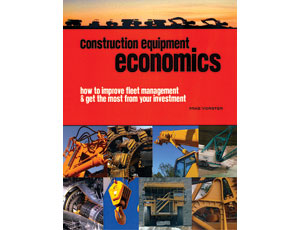Mike Vorster; 230 pages; $87.75
It is no secret that heavy iron is an important part of the industry. But even as the average heavy-construction firm has 35% of its assets tied up in machinery, decisions to buy new machines, rent others, rebuild old ones or scrap clunkers still happen in isolation of key business leaders.

Veteran civil engineer and teacher Mike Vorster demystifies equipment in his new book, which he wrote to build bridges between the front office and the field. “What I hope is that this book increases the CFO’s empathy for fleet management,” he says.
The South Africa-born professor, who teaches at Blacksburg, Va.-based Virginia Tech, lays out the pros and cons of management styles and progresses to deeper subjects such as estimating costs, determining internal rental rates, planning for tax events and budgeting for inflation.
Vorster has a talent for boiling down difficult concepts into bite-sized analogies. One useful idea is what he calls “buying what you burn,” in other words, looking at a fleet of machines as a “gas tank” of potential machine-hours. As you work, you deplete the tank. In today’s economy, it is all too easy to put off new purchases, and some firms will find themselves at undercapacity when the market turns around, Vorster says. “I think a lot of people are not buying what they are burning…because they don’t have the confidence of what they are going to be burning tomorrow,” he says.
Vorster, 68, who has helped bring order to a chaotic area of construction, plans to retire in December to consult and teach private classes. His book is available for sale at www.cempcentral.com.

Post a comment to this article
Report Abusive Comment